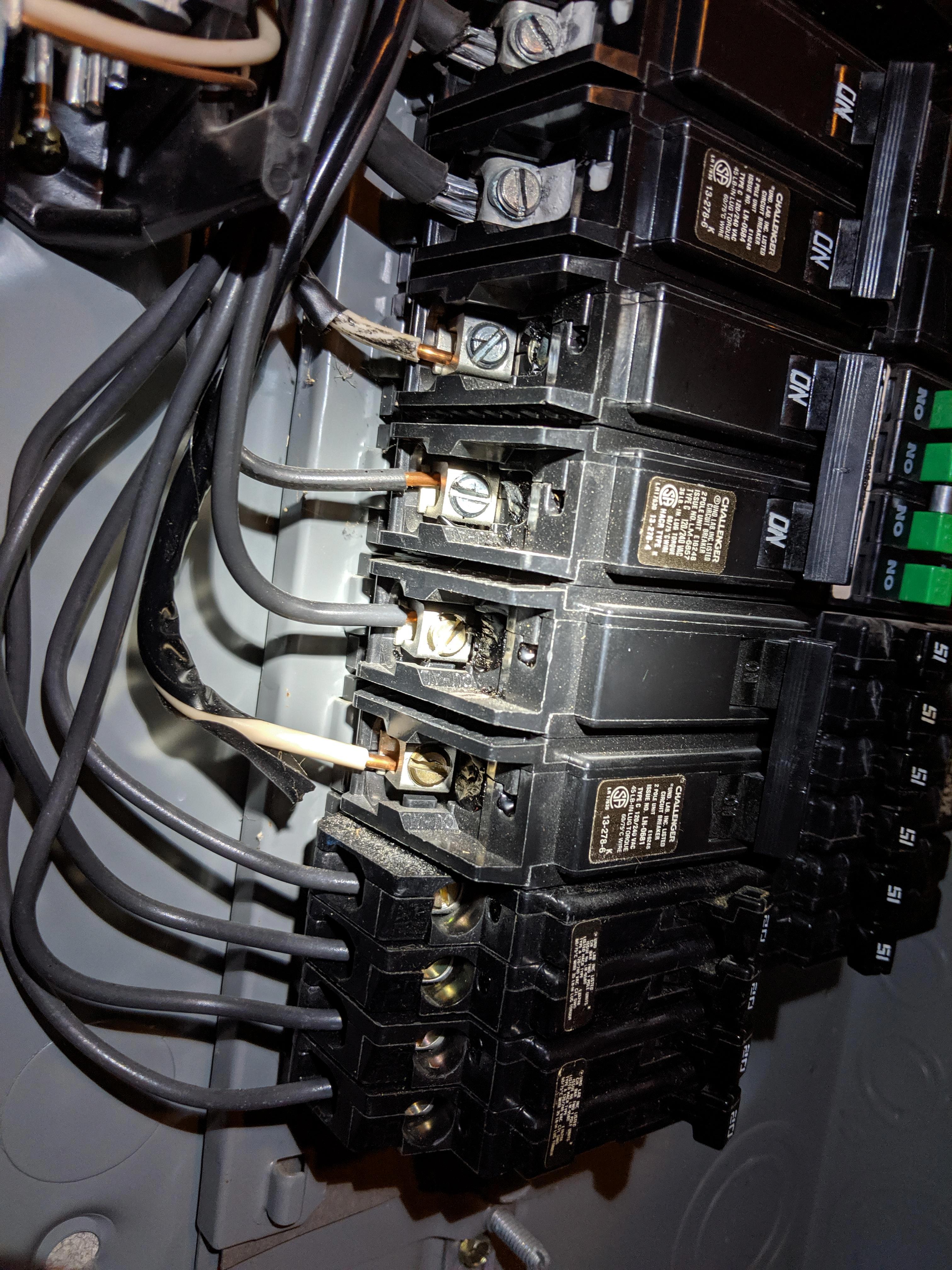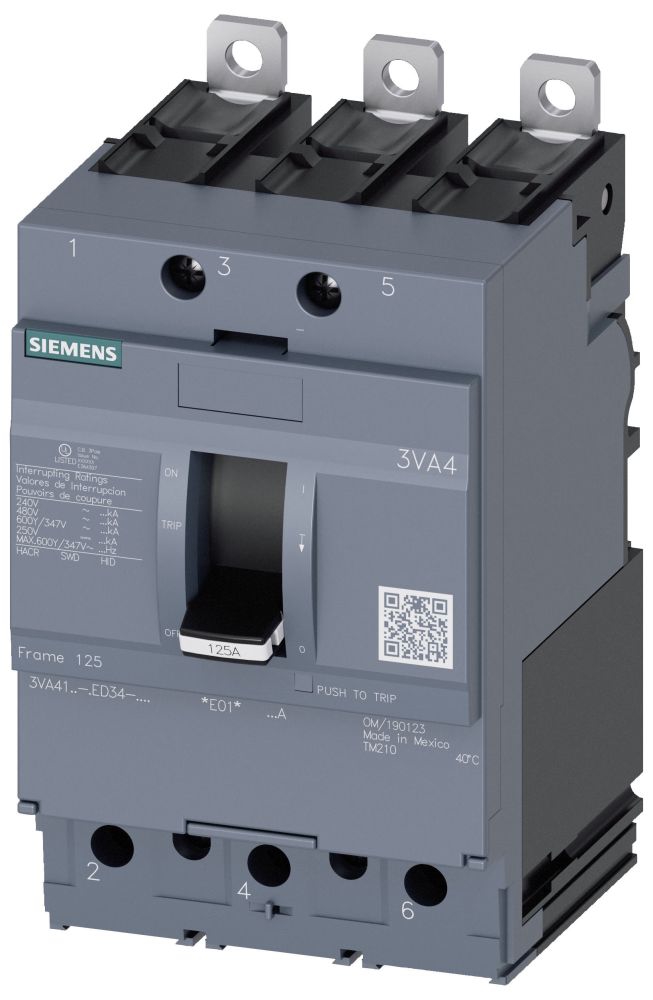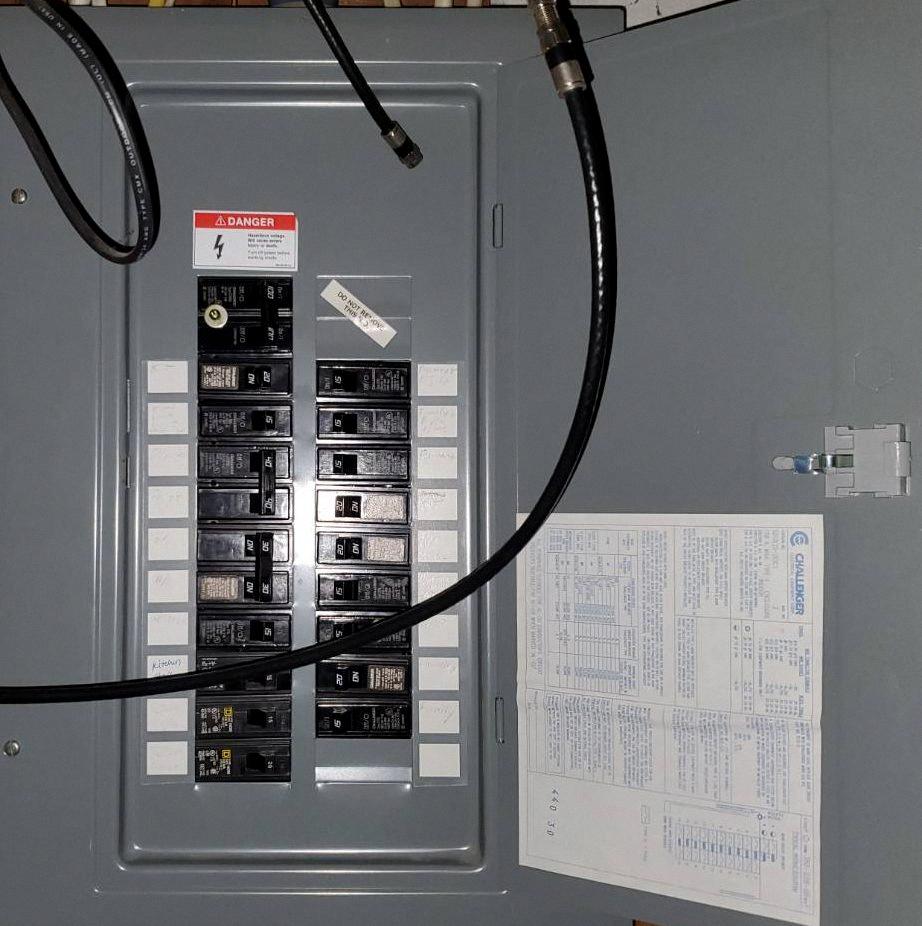Are you living in an older home and wondering if your Challenger breaker panel is safe? If so, then you should know that it is not safe to use Challenger breaker boxes due to overheating and aging issues. The good news is, there are new high quality replacement circuit breakers available from Connecticut Electric that can be used in Challenger load centers.
When replacing your Challenger breakers, it is important to make sure that they are Type BR/Type C from Bryant, Cutler Hammer or Eaton. These types of circuit breakers have been tested and approved by safety agencies and are the safest option for replacing your old Challenger breakers. Siemens QT Breakers may also be compatible with certain GE, Murray, Arrow Hart, Challenger, and Westinghouse panels but it is important to check compatibility beore purchasing.
Replacing your old Challenger breaker panel with a new one can help ensure the safety of your home by eliminating the risk of fires due to overheating or aging issues. It is also important to remember other safety precautions such as not overloading the panel with too many outlets or wiring improperly.
If you think you may need to replace your old Challenger breaker panel but don’t know where to start or what type of breaker panel is best for your home, then contact a professional electrician who can provide advice on the best course of action for replacing your old panel. They can also help answer any questions you have about safety regulations and proper wiring techniques when dealing with electrical equipment.
Compatibility of Challenger Breakers with Other Breakers
The compatible breaker for Challenger breakers is Type BR/Type C from Bryant, Cutler Hammer or Eaton. All breakers should be rated for the same voltage and amperage as your panel. Make sure to check the label on the breaker before installation to ensure that it is compatible with your system. Additionally, if you are unsure of what type of breaker you need or how to install it, consult a licensed electrician for assistance.

Source: reddit.com
Are Challenger and Siemens Breakers Interchangeable?
No, Challenger and Siemens breakers are not interchangeable. Siemens QT breakers are only compatible with certain GE, Murray, Arrow Hart, Challenger, and Westinghouse panels. However, Challenger breakers are not compatible with Siemens panels.
Replacing Challenger Circuit Breakers
Yes, Challenger circuit breakers need to be replaced if they’re old or have been damaged. While some may still function properly, the potential for them to fail due to age or wear and tear increases over time. They can cause serious safety hazards and if not replaced, could lead to a fire or shock hazard. Thus, it is important to upgrade older Challenger circuit breakers and replace them with modern, UL listed panels.
Do Challenger Circuit Breakers Still Exist?
Yes, Connecticut Electric still manufactures new high quality replacement circuit breakers for Challenger load centers that accept Challenger Type A style circuit breakers. These circuit breakers are tested and Safety Agency Listed, ensuring they meet all safety standards. Customers should always use new tested and Safety Agency Listed circuit breakers when replacing a breaker in their home or business.
Can GE Breakers Be Used in a Challenger Panel?
Yes, GE circuit breakers can be used in a Challenger panel. They are compatible and provide the same level of protection as Challenger brand breakers. GE offers a variety of breaker types, including single pole, double pole, and triple pole breakers. Additionally, there are several specialized GE breakers for specific applications like arc fault circuit interrupters (AFCIs) and ground fault circuit interrupters (GFCIs). To ensure compatibility with your Challenger panel, make sure to check the voltage and amperage ratings on the breaker you select.

Comparing Challenger and Eaton
No, Challenger is not the same as Eaton. Eaton acquired the Distribution and Control Business Unit of Westinghouse in 1993, which included the Westinghouse and Challenger lines. As part of the acquisition, Eaton began to market their product solely under the Eaton brand and retired the Challenger name. The original Cutler-Hammer line was sold off to Thomas & Betts after the acquisition.
Interchangeable Breaker Brands
Eaton’s UL classified breakers are designed and tested to be compatible with circuit breakers manufactured by General Electric, Thomas & Betts, ITE/Siemens, Murray, Crouse-Hinds, and Square D. Eaton’s breakers are designed to fit virtually any panel and have been tested to ensure they meet the highest safety standards while offering maximum reliability and compatibility.
Mixing Circuit Breaker Brands: Is it Possible?
No, you cannot mix circuit breaker brands. Different brands of circuit breakers may be physically interchangeable, but they are not designed to work together. In fact, it is dangerous to mix different brands of circuit breakers in a panel as they could cuse an electrical short or even an arc flash if they do not properly fit into the panel. Additionally, even if the breaker fits into the panel, it may not trip correctly when the current reaches an unsafe level. This can result in a fire or other damage to your home or building due to overheating of wires and other components. For this reason, it’s important to use only compatible circuit breakers within a single panel or system.
Interchangeable Breakers for Siemens
Siemens offers several interchangeable plug-on type breakers that are compatible with their loadcentres and are widely used by a variety of brands, including Murray, Gould, and Sylvania. These include the Siemens QP, QT, QAF, and QPF breakers. All of these breakers can be easily plugged into a Siemens loadcentre without any modifications or additional components. Additionally, they all offer the same level of safety protection as other Siemens products.

Replacing Challenger Breakers With Eaton Breakers
Yes, you can replace Challenger breakers with Eaton/Cutler-Hammer breakers. Eaton/Cutler-Hammer is a trusted manufacturer of electrical products and their breakers are approved by Underwriters Laboratories Incorporated (UL). Their breaker series are designed to work with Challenger panels, providing a safe and reliable replacement option. Eaton/Cutler-Hammer offers a wide range of products, including single pole, double pole and combination breakers, so you can find the right breaker for your needs. Additionally, their breaker replacements include features such as quick make and break capabilities for improved safety, as well as adjustable trip settings for added convenience.
Average Life Expectancy of a Circuit Breaker
The life expectancy of a circuit breaker is typically between 30-40 years, depending on the environmental conditions and the quality of the product. Factors such as fluctuating voltages and poor power ratings can significantly reduce the lifespan of the breaker. It is important to keep your circuit breaker clean and free from dust and debris, and to regularly check for any signs of wear or corrosion. Additionally, it is important to ensure that your circuit breaker meets all safety standards set forth by the Consumer Product Safety Commission (CPSC) in order to ensure maximum longevity.
Signs That Your Car Needs a New Breaker
If your car is exhibiting any of the following symptoms, it may be a sign that you need to replace your circuit breaker:
1. Your car’s electrical system isn’t functioning properly. If your lights, windshield wipers, and other electrical components are not working as they should, it could be due to a faulty circuit breaker.
2. You notice an unusual smell or smoke coming from the breaker panel. This could indicate that thre is an overload of electricity being drawn through the circuit and it needs to be reset or replaced.
3. Your dashboard lights are flickering or have stopped working altogether. This could be caused by a malfunctioning circuit breaker in the vehicle’s electrical system.
4. You hear an abnormal buzzing noise coming from the breaker panel whenever you turn on certain components in your car, such as the radio or headlights. This buzzing sound indicates that there is too much electricity being drawn through the circuit and the breaker needs to be replaced in order to prevent further damage from occurring.
5. Your car’s battery isn’t charging correctly or starts draining quickly even when you aren’t using any electrical components in your vehicle. This could also indicate a problem with your circuit breaker and require replacement in order for your battery to function correctly again.
Ceasing of Production of Challenger Electrical Panels
The last Challenger electrical panel was manufactured in 1994. In that same year, GTE Corporation issued a recall due to safety hazards associated with the product. The recall stated that the panels could cause an electrical fire, and thus anyone with a Challenger panel was advised to have it replaced immediately. After the recall, GTE stopped production of the Challenger electrical panels and never resumed it again.

Source: structuretech.com
Conclusion
In conclusion, it is not safe to use Challenger breaker boxes due to potential overheating and old age issues. If you are living in an old house with a Challenger panel, it is recommended to replace all the circuit breakers with new, tested and Safety Agency Listed breakers such as Type BR/Type C from Bryant, Cutler Hammer or Eaton. Siemens QT Breakers are also compatible with certain GE, Murray, Arrow Hart, Challenger, and Westinghouse panels. Connecticut Electric manufactures new high quality replacement circuit breakers for Challenger load centers that accept Challenger Type A style circuit breakers. Ultimately, replacing your circuit breakers will ensure the safety of your home and thoe living in it.
